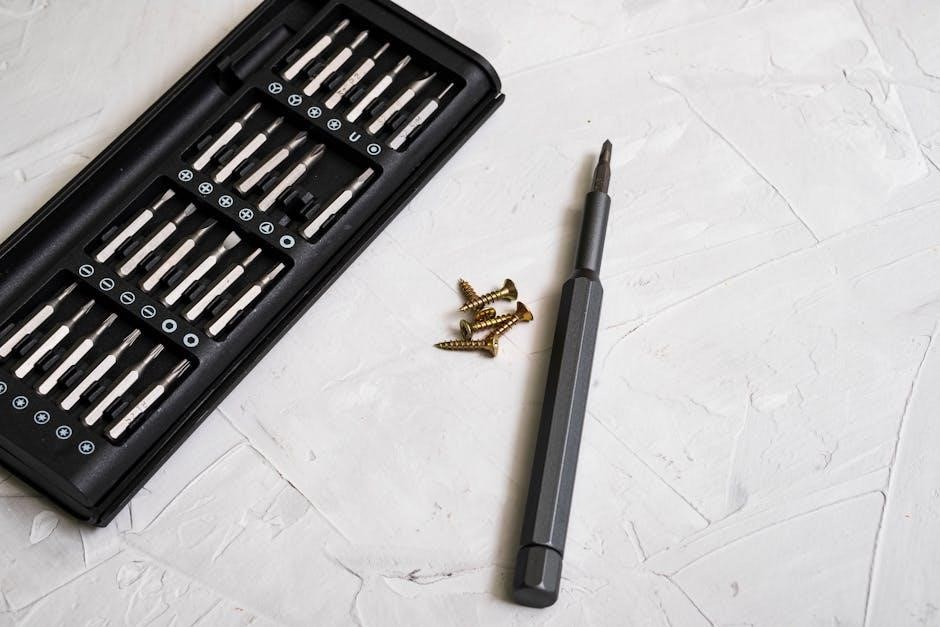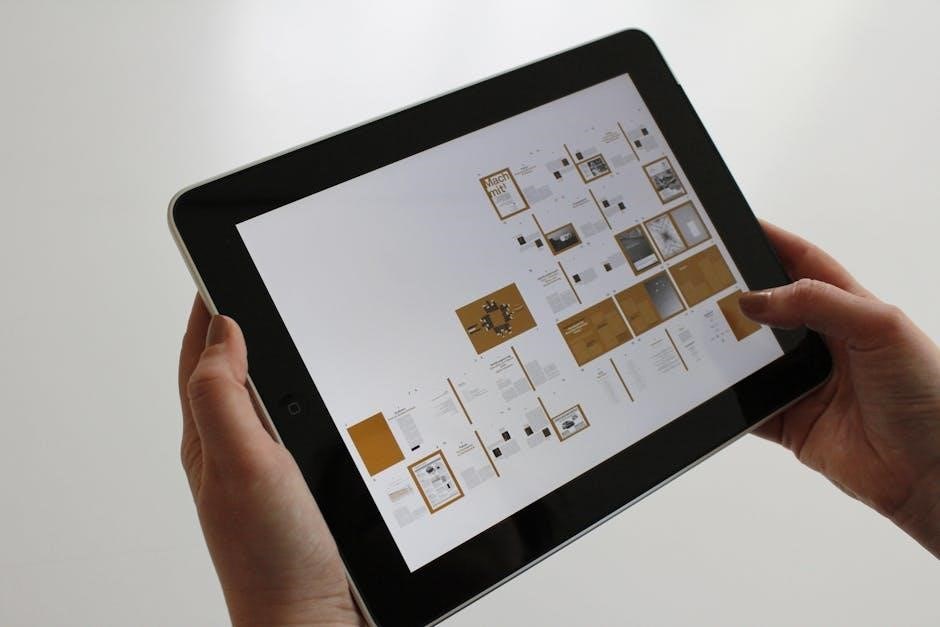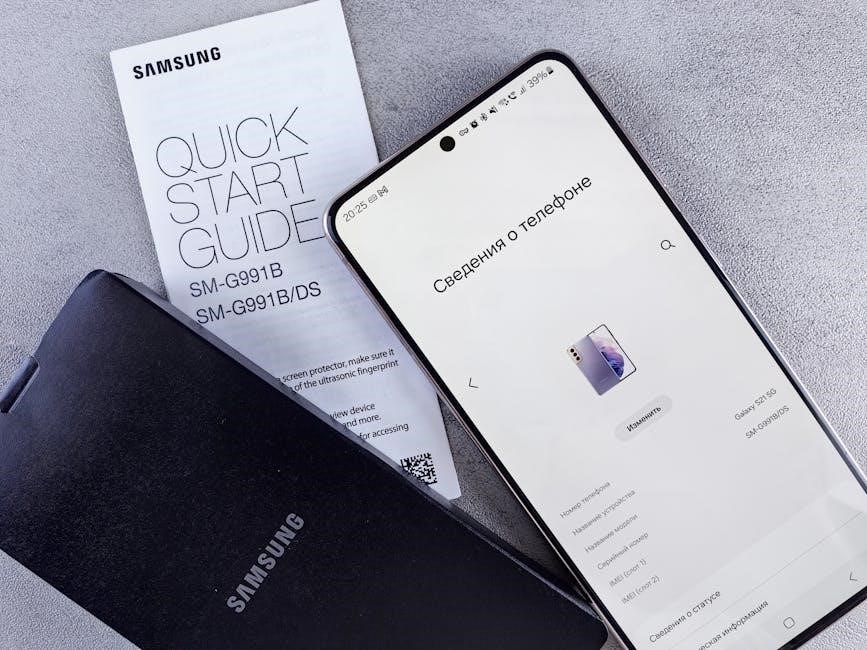The Accu-Chek Aviva System is a user-friendly blood glucose monitoring solution using Accu-Chek Aviva test strips. It features a backlit display and fast test results, designed for convenient diabetes management and compatibility with diabetes management systems.
1.1 Overview of the Accu-Chek Aviva Meter
The Accu-Chek Aviva Meter is a portable and
1.2 Key Features and Benefits
The Accu-Chek Aviva Meter offers several key features that enhance its functionality and user experience. It boasts a large, backlit display for easy reading, even in low-light conditions. The meter provides fast test results in just a few seconds, ensuring quick and convenient monitoring. It also features memory storage for up to 720 test results, allowing users to track their glucose levels over time. Additionally, the device is compatible with the Accu-Chek 360 Diabetes Management System, enabling seamless data transfer and analysis. Its user-friendly design includes intuitive buttons and a portable size, making it ideal for daily use. These features collectively contribute to accurate, reliable, and convenient blood glucose monitoring, supporting effective diabetes management.

1.3 Compatibility with Accu-Chek Aviva Test Strips
The Accu-Chek Aviva Meter is exclusively designed to work with Accu-Chek Aviva Test Strips, ensuring accuracy and reliability in blood glucose monitoring; These test strips are specifically formulated to deliver precise results when used with the meter. Using test strips from other brands may lead to inaccurate readings or meter malfunction. Always check the expiration date on the test strip container and avoid using expired strips. Proper handling and storage of test strips are crucial to maintain their effectiveness. The meter’s design ensures a secure fit for the test strips, minimizing errors during testing. For optimal performance, only use Accu-Chek Aviva Test Strips and follow the guidelines provided in the user manual.

Getting Started with the Accu-Chek Aviva
Unbox and set up your Accu-Chek Aviva Meter, ensuring all components are included. Follow the user manual for initial setup, including time and date configuration. Designed for easy first-time use, the meter guides you through initial testing with clear instructions and intuitive buttons. Refer to the quick start guide for a seamless experience. This section helps you understand the basics of operating your meter and preparing for your first blood glucose test. Always ensure the meter is properly initialized before use for accurate results. The Accu-Chek Aviva system is designed to be user-friendly, making it easy to begin monitoring your blood glucose effectively.
2.1 Unboxing and Initial Setup
Welcome to your Accu-Chek Aviva system! Upon unboxing, ensure all components are included: the meter, Accu-Chek Aviva test strips, a lancing device, lancets, and the user manual. Carefully remove the meter from its protective packaging and insert the provided battery if not pre-installed. Before first use, read the quick start guide or first-time user guide for step-by-step instructions. Ensure the meter is placed on a flat, stable surface. Familiarize yourself with the buttons and display. The meter is pre-set for capillary blood glucose testing but may require additional setup for other blood types. Use only Accu-Chek Aviva test strips for accurate results. Follow the manual for any additional initialization steps. This process ensures your meter is ready for precise blood glucose monitoring. Always refer to the user manual for detailed guidance. The system is designed for ease of use, making your initial setup straightforward and stress-free.
2.2 Setting the Time and Date
Setting the time and date on your Accu-Chek Aviva meter is essential for accurate blood glucose record-keeping. Turn on the meter and use the navigation buttons to access the time and date settings. Scroll through options to select the correct time format (12- or 24-hour) and date format. Use the arrow keys to adjust the hour, minute, and date values. Once set, confirm the settings using the OK or SET button. Ensure the date is in the format MM/DD/YYYY. Refer to the user manual for detailed instructions if needed. Accurate time and date settings ensure your test results are properly recorded and aligned with your diabetes management plan. This step is crucial for maintaining precise and organized blood glucose records. Always verify the time and date before conducting a test.
2.3 First-Time User Guide
Welcome to the Accu-Chek Aviva system! This guide helps you get started quickly. First, unbox your meter, test strips, and accessories. Read the Quick Start Guide for a concise setup process. Insert the battery or ensure it is pre-installed. Perform a quality check by inserting a test strip to activate the meter. Familiarize yourself with the buttons and display. Set the time and date as outlined in the manual. Before testing, ensure the meter is ready and the test strip is undamaged. Always handle test strips correctly to avoid errors. Once set up, you’re ready to begin testing. For detailed instructions, refer to the full user manual or online resources. This guide ensures a smooth start to managing your blood glucose with the Accu-Chek Aviva.

Understanding and Using Accu-Chek Aviva Test Strips
The Accu-Chek Aviva test strips are specifically designed for use with the Aviva meter to ensure accurate blood glucose measurement and reliable results for effective diabetes management.
3.1 Handling and Storing Test Strips
Proper handling and storage of Accu-Chek Aviva test strips are crucial for accurate blood glucose results. Store the test strips in their original vial with the cap tightly closed to protect them from moisture and light. Avoid exposure to extreme temperatures, humidity, or direct sunlight. Do not use test strips past the expiration date printed on the vial. Always handle test strips by the edges to prevent contamination from fingerprints or dirt. Remove a test strip from the vial just before use and replace the cap immediately to maintain humidity control. Never reuse a test strip, as this can lead to inaccurate readings. Proper storage and handling ensure the reliability and accuracy of your blood glucose testing.
3.2 Inserting a Test Strip into the Meter
To insert a test strip into the Accu-Chek Aviva meter, align the gold edge of the test strip with the strip port on the meter. Gently push the strip into the port until it clicks, ensuring it is fully inserted. The meter will automatically turn on when the strip is properly inserted. Once the test strip is in place, the meter will display a test strip icon and a “0” to indicate it is ready for testing. Always use Accu-Chek Aviva test strips, as other strips are incompatible and may cause errors. The meter will prompt you to add a blood sample, and the test will begin once the blood is applied to the designated area on the strip.
3.3 Disposing of Used Test Strips
After conducting a blood glucose test, carefully remove the used test strip from the meter. Properly dispose of the strip in a trash container designated for biohazardous waste if available. Avoid reusing test strips, as this can lead to inaccurate results. Additionally, ensure the strip is completely dry before disposal to prevent any potential contamination. Always follow local regulations for disposing of medical waste. For safety and hygiene, wash your hands after handling used test strips. Proper disposal helps maintain a clean environment and prevents the risk of infection or misuse of the strips. Keep used strips out of reach of children and pets to ensure safe handling.

Performing a Blood Glucose Test
Performing a blood glucose test involves preparing, conducting, and interpreting results. Use Accu-Chek Aviva test strips and follow proper technique for obtaining a blood sample. Ensure accurate results by following the meter’s instructions and maintaining hygiene. This process is crucial for effective diabetes management and monitoring blood sugar levels.
4.1 Preparing for the Test
Preparing for a blood glucose test with the Accu-Chek Aviva involves several key steps. First, ensure your hands are clean and dry to avoid contamination. Gather the necessary supplies, including the meter, a test strip, and a lancing device. Check the expiration date on the test strip container and ensure the strips are compatible with your meter. Turn on the meter and confirm it is ready for use. If needed, insert a new battery or ensure the battery level is sufficient. Finally, prepare your fingertip or alternative testing site by washing it with warm water and gently patting it dry. Proper preparation ensures accurate and reliable test results.
4.2 Conducting the Test
To conduct a blood glucose test with the Accu-Chek Aviva, insert a test strip into the meter, ensuring it clicks into place. The meter will automatically turn on. Use the lancing device to obtain a small blood sample, typically from the fingertip or an alternative site. Gently press the lancing device against your skin until you see a drop of blood. Carefully touch the blood drop to the test strip’s tip. The meter will detect the sample and begin analyzing. You may see a flashing symbol or hear a beep during this process. The result will appear on the display within 5 seconds. Ensure the meter is properly lit and readable before recording the result for accurate tracking and management.
4.3 Reading and Interpreting Results
Once the test is complete, the Accu-Chek Aviva meter displays your blood glucose result on its backlit screen. The result is shown in numerical format, making it easy to read. If your result is within your target range, the meter will not alert you. However, if your reading is too high or too low, the meter may display a warning symbol, such as an arrow pointing up (high) or down (low). Use this information to adjust your diet, exercise, or medication as needed. Always refer to your healthcare provider’s guidelines for interpreting results and managing your glucose levels effectively. Accurate interpretation is crucial for maintaining proper diabetes control and preventing complications.

Maintenance and Care of the Meter
The Accu-Chek Aviva meter requires minimal maintenance. Regularly clean the meter with a soft cloth and avoid exposure to extreme temperatures or moisture. Store it in a protective case when not in use to ensure longevity. Refer to the user manual for detailed care instructions. This ensures accurate and reliable performance over time.
5.1 Cleaning the Meter

Regular cleaning of the Accu-Chek Aviva meter is essential for maintaining its accuracy and longevity. Use a soft, dry cloth to gently wipe the meter’s exterior, avoiding any abrasive materials. For more thorough cleaning, dampen the cloth with mild soap and water, but ensure no moisture enters the meter. Avoid using harsh chemicals or alcohol, as they may damage the device. Never submerge the meter in water or expose it to excessive humidity. Cleaning should be done periodically, especially if the meter is handled by multiple users. Refer to the user manual for specific cleaning instructions to ensure proper maintenance and functionality. This simple process helps prevent contamination and ensures reliable blood glucose readings. Always store the meter in a dry, protective case when not in use.
5.2 Replacing the Battery
To replace the battery in your Accu-Chek Aviva meter, first ensure the device is turned off. Locate the battery compartment on the back of the meter and slide it open. Remove the old battery and insert a new lithium battery, ensuring the positive (+) terminal faces upwards. Close the compartment securely. If the low battery symbol appears on the display, the meter may require calibration or a few seconds to recognize the new battery. Use only the recommended battery type to maintain optimal performance. Refer to the user manual for detailed steps and safety precautions. Proper battery replacement ensures accurate readings and extends the meter’s lifespan. Always handle batteries safely and dispose of them appropriately.

5.3 Regular Maintenance Tips
Regular maintenance ensures your Accu-Chek Aviva meter operates accurately and lasts longer. Clean the meter with a soft cloth and mild soap solution, avoiding any liquid exposure. Store the device in a dry, cool place, away from direct sunlight. Always use Accu-Chek Aviva test strips and ensure they are within their expiration date. Check the battery level regularly and replace it when the low-battery symbol appears. Avoid extreme temperatures and physical stress on the meter. For optimal performance, calibration should be performed as recommended in the user manual. By following these tips, you can maintain the accuracy and reliability of your Accu-Chek Aviva system, ensuring it continues to support effective diabetes management.

Troubleshooting Common Issues
The Accu-Chek Aviva system offers solutions to common issues like error messages and test strip errors. Always use compatible strips and consult the user manual for guidance.
6.1 Error Messages and Their Meanings
The Accu-Chek Aviva meter displays specific error messages to help users identify and resolve issues. Common errors include E1 or E2, which indicate problems with the test strip, such as being expired, damaged, or incorrectly inserted. The LO or HI messages signify blood glucose levels that are too low or too high to measure accurately. These errors guide users to take appropriate actions, like retesting with a new strip or seeking medical advice. Always refer to the user manual for detailed explanations and troubleshooting steps to ensure accurate results and proper device functionality.
6.2 Resolving Test Strip Errors

Resolving test strip errors with the Accu-Chek Aviva meter involves identifying the root cause and taking corrective action. If an error occurs, ensure the test strip is not expired or damaged. Always store strips in their original vial with the cap tightly closed to maintain humidity control. If the meter displays an error, remove the strip, turn the meter off, and restart it. Reinsert a new strip, ensuring it is properly aligned and fully seated. Avoid touching the test pad or exposing strips to extreme temperatures. If issues persist, refer to the user manual or contact customer support for assistance. Proper handling and storage of test strips are key to accurate results and smooth operation.
